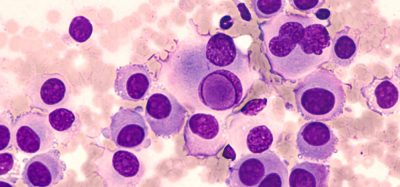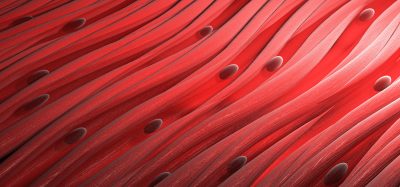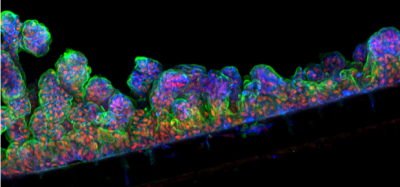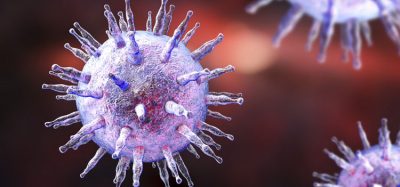Tendon stem cell discovery could lead to improvements in injury recovery
Posted: 25 November 2019 | Rachael Harper (Drug Target Review) | No comments yet
Researchers have discovered the existence of tendon stem cells, which could lead to improvements in treating tendon injuries, avoiding surgery.
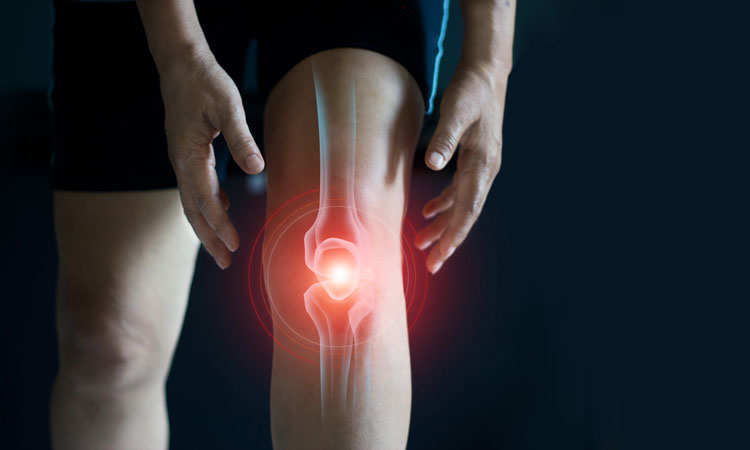
New research has revealed the existence of tendon stem cells which could potentially be harnessed to improve tendon recovery after an injury and perhaps even avoid surgery.
The research was led by Chen-Ming Fan at the Carnegie Institution of Science, US.
Once tendons are injured, they rarely fully recover, which can result in limited mobility and require long-term pain management or even surgery. This is due to fibrous scars, which disrupt the tissue structure of the tendon.
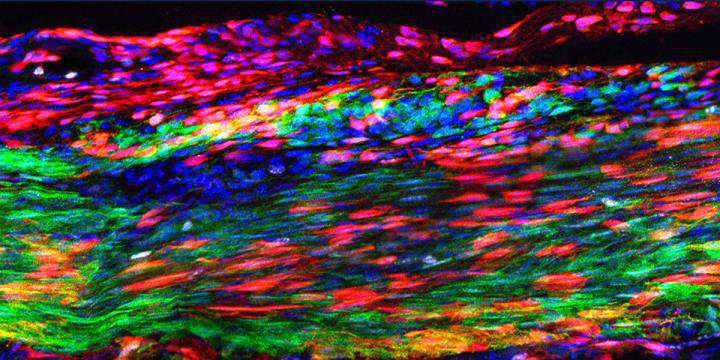
This image shows the Patellar tendon 30 days after an injury. The red marks newly discovered tendon stem cells that have self-renewed and are layered over green marked, original tendon cells. During regeneration, some tendon stem cells differentiate to make newly regenerated tendon cells – a process during which they transition into a yellow-orange colour. The blue indicates cellular nuclei (credit: Tyler Harvey).
Fan, along with Carnegie’s Tyler Harvey and Sara Flamenco, revealed all of the cell types present in the Patellar tendon, found below the kneecap, including previously undefined tendon stem cells.
“Because tendon injuries rarely heal completely, it was thought that tendon stem cells might not exist,” said lead author Harvey. “Many searched for them to no avail, but our work defined them for the first time.”
The team’s research showed that both fibrous scar tissue cells and tendon stem cells originate in the same space – the protective cells that surround a tendon. Moreover, these tendon stem cells are part of a competitive system with precursors of fibrous scars, which explains why tendon healing is such a challenge.
It was thought that tendon stem cells might not exist… but our work defined them for the first time”
The team demonstrated that both tendon stem cells and scar tissue precursor cells are stimulated into action by a protein called platelet-derived growth factor-A. When tendon stem cells are altered so that they do not respond to this growth factor, then only scar tissue and no new tendon cells form after an injury.
“Tendon stem cells exist, but they must outcompete the scar tissue precursors in order to prevent the formation of difficult, fibrous scars,” Fan explained. “Finding a therapeutic way to block the scar-forming cells and enhance the tendon stem cells could be a game-changer when it comes to treating tendon injuries.”
The research was published in Nature Cell Biology.
Related topics
Protein, Regenerative Medicine, Research & Development, Stem Cells, Therapeutics
Related organisations
Carnegie Institution for Science
Related people
Chen-Ming Fan, Sara Flamenco, Tyler Harvey




